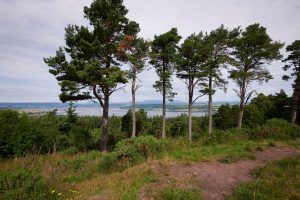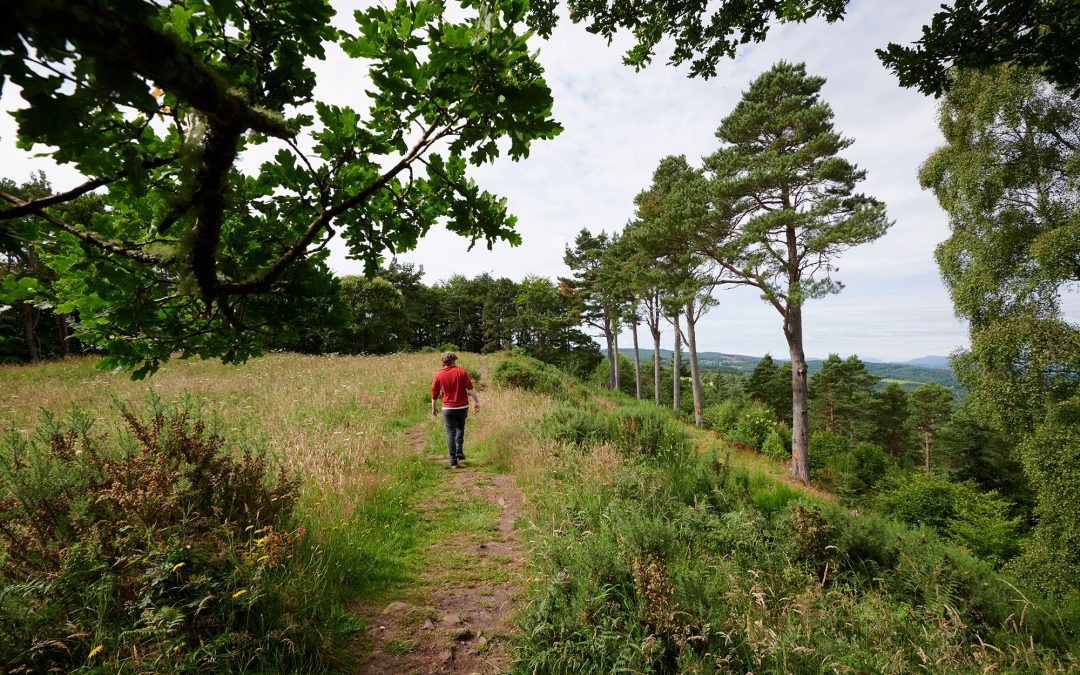Annette McKittrick tells us the story of Craig Phadrig and how it helps us to understand the social and cultural development of Inverness.
Inverness is a city which has a deep connection to its history and heritage, with visible connections to the past throughout the city and its surrounding landscapes, making the area an attractive hub for tourists, and a fascinating place for locals to live and work. There is no shortage of places to visit and enjoy, and the remains of Craig Phadrig hillfort is one of the local archaeological sites which has a fascinating history, telling the story of the area’s development socially and culturally, and with fascinating stories about the Pictish journey from pre-Christianity paganism to Saint Columbus’ arrival, and the subsequent conversion of the Picts to the Christian faith.
As locals we are always grateful to have such a richly historic site so close to our home, where we can enjoy family walks and a jaunt through time. No matter the season, you are always guaranteed a friendly smile from fellow walkers who are out enjoying a stroll along the dirt paths which lead to the top, and on to spectacular views over the Beauly and Moray Firths and across to the Black Isle with clear views of the Ben Wyvis Munro to the distance. Craig Phadrig is today managed by Forestry and Land Scotland, whose work there maintains this historic site making it accessible, safe and informative for visitors to appreciate. It can be seen from the city centre, as it is sits on a high point within the landscape, and there are also incredible views of Craig Phadrig from its neighbouring hill fort of Ord Hill on the Black Isle.
Craig Phadrig was a hill fort which was occupied from c300 BC (Iron Age), until its abandonment which has been radiocarbon dated by Alder and Birch charcoal to 409-235 cal BC and 461-176 Cal BC (Canmore, 2020). It is a prominent site not only in terms of its placement within the landscape, but also with regards to its historical significance in shaping local culture and identity, and during its occupation, would have been a seat which held a great deal of control and power over the local area. Its location is strategically placed, dominating its surroundings, and serving as a useful hub for trade and networking across both land and water, whilst also allowing for plenty of warning of any potential hostile contact or enemies approaching, and for controlling the local area politically. It is known as a ‘vitrified’ hill fort, which means that it was burned down with such an intense heat, that the rocks used for its foundations had liquified, fusing together. Whether it was burned down as an act of enemy attack, or as a ceremonial activity marking the end of its use is currently unknown. There is a sample section of the vitrified rock from Craig Phadrig on display at Inverness Museum and Art Gallery. The Museum also has some fascinating Pictish carved stones and a superb collection generally of objects relating to the natural heritage and history of this part of the Highlands. Look out for the window with the fantastic view of Craig Phadrig too!

As well as its archaeological significance, Craig Phadrig hill fort also has a number of locally significant stories associated with it. It is the site which is believed to have been the location where Saint Columba visited and where many of the alleged events which happened during his time in the area are central to how Inverness is viewed by tourists and locals today. It was Saint Columba who purportedly converted King Brude and the Picts to Christianity, after performing phenomena such as signing the cross outside the door of King Brude’s door at Craig Phadrig, and thus miraculously unlocking and opening the doors into the fort to gain entry. The Loch Ness Monster was allegedly tamed by the saint’s miraculous powers. Saint Columba is believed to have stayed in the Inverness area for a number of years, and successfully converted the Picts to Christianity.
Sites like Craig Phadrig always offer up an opportunity for learning whilst enjoying a stroll in a beautiful historic location. Topics of discussion with my youngest child, Callum, have often centred around the location of the fort, and contemplating the reasons why they may have chosen this particular location to build it. When he was younger, he enjoyed imagining what it must have felt like to be a Pict living at Craig Phadrig or what would then have been the surrounding settlements and farmlands – what they would have worn and eaten. There is a fantastic educational resource also available from the Highland Council for ideas about questions and topics of discussions about Craig Phadrig. Our eldest daughter Lauren is currently studying contemporary art and contextualised practice at the local university, and enjoys the creative opportunities along the walks, and can often be found snapping photographs of the flora and fauna for inspiration for her work. As far as historic sites go, Craig Phadrig is one of our family favourites for a day out to enjoy, with something for everyone.
Some links, further reading and references:
Highland council educational resource
Rutherford, W (1987) ‘Celtic mythology’, Hodder & Stoughton Ltd, London, P. 138
Green, M.J (1995) ‘The Celtic world’, Routledge, London, P. 429
James, S (1999) ‘The Atlantic Celts: Ancient people or modern invention?’, British Museum Press, London.

